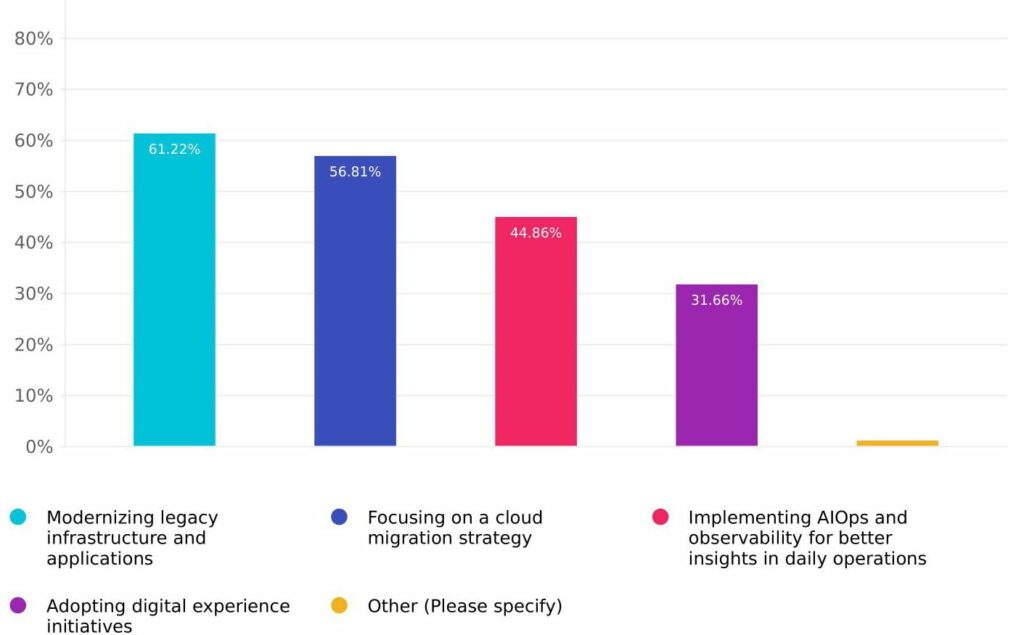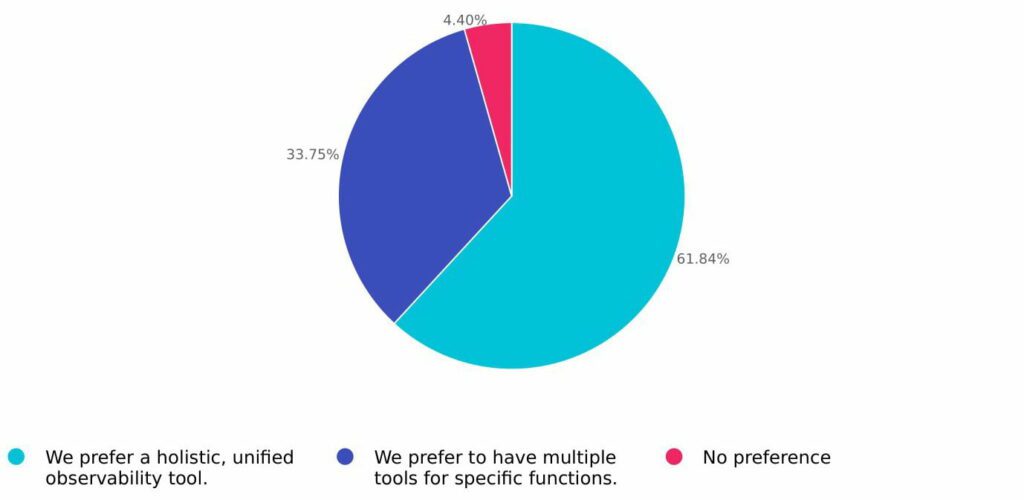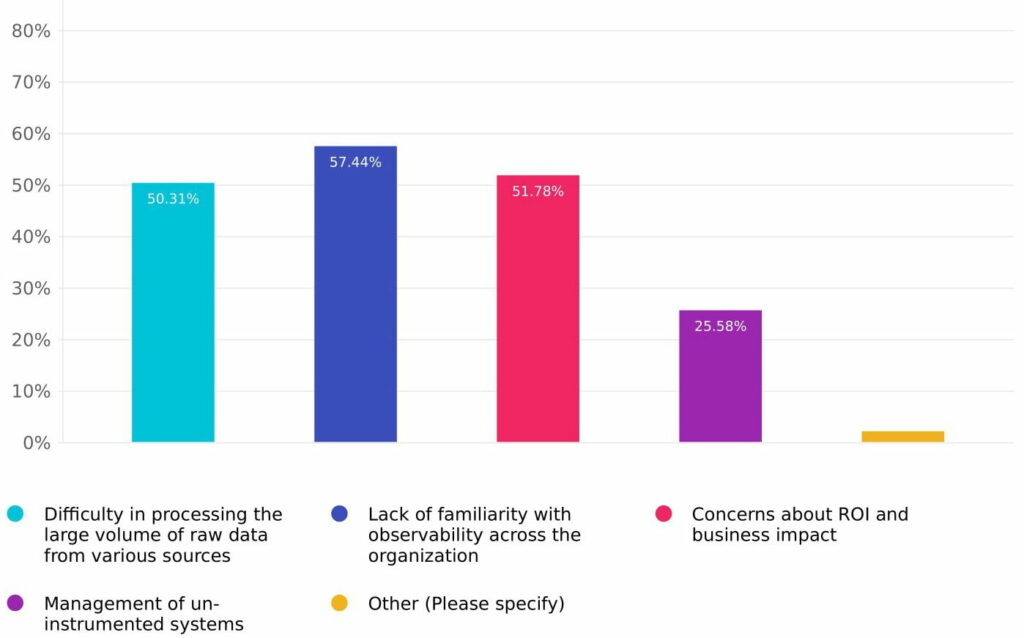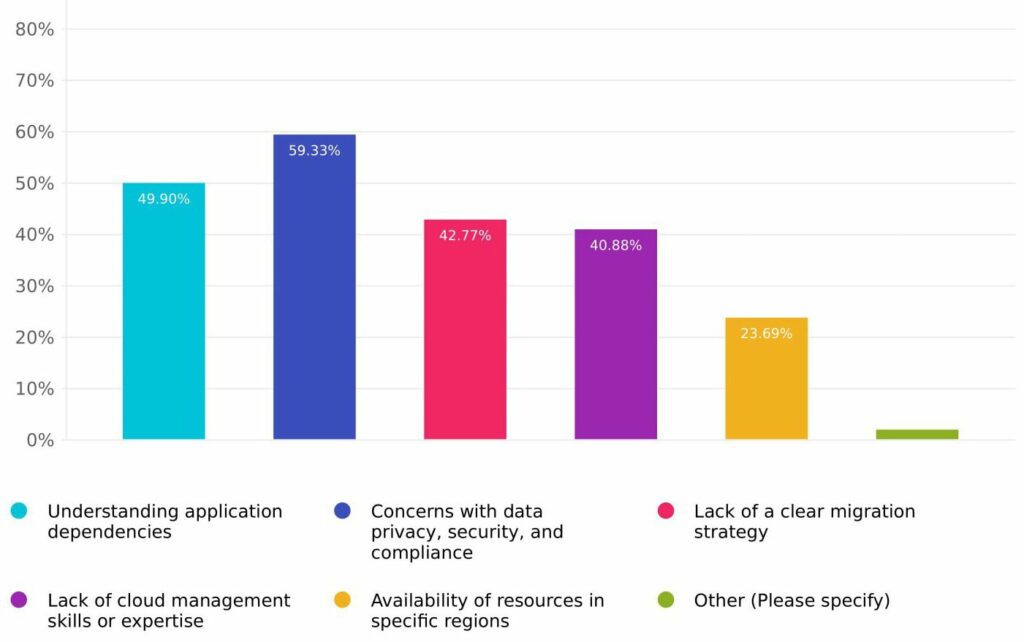ManageEngine, the enterprise IT management division of Zoho Corporation, announced the results of its State of ITOM in 2023 study, which examined the trends observed in ITOM.
In today’s digital landscape, providing a seamless customer experience (CX) has become a top priority for IT operations teams. They are increasingly turning to observability and AIOps to achieve this. However, the study found that organizations face several challenges while adopting both technologies.
With the digital landscape growing more complex each day, businesses are realizing that the customer experience is a top priority. To achieve their goal of providing a superior digital experience for customers, organizations are turning to several solutions to enhance their IT operations. Some of the ITOM trends that are currently making headlines include observability, AIOps, and cloud migration.
In a recent survey conducted by ManageEngine, they asked over 470 IT admins, engineers, CIOs, and CTOs about their opinions on these ITOM trends and how they plan to approach them this year. They also asked them about some of the challenges they are facing in navigating these trends.
Key highlights from the study:
- 45% of organizations will focus on implementing Observability and AIOps in 2023
- 71% of large enterprises are focused on providing a superior digital experience to customers
- 63% of large enterprises are still unfamiliar with the concept of Observability
- 50% of SMEs struggle with adopting a clear strategy for implementing AIOps
- 83% of large enterprises will prioritize their move to the cloud in 2023
Infrastructure modernization
To improve their overall customer experience, organizations need to ensure their IT infrastructures, such as servers and applications, are updated and equipped to meet business demands. Modernizing outdated servers and applications can provide several benefits, including improved visibility, enhanced scalability, faster problem resolution, and reduced downtime. The top drivers for application modernization in 2023 are:
- The security and compliance risks of legacy systems.
- The need to integrate new technologies with IT operations.
- The desire to reduce long-term operations costs.
- The demand for a superior customer experience.
As shown in Figure 1, 61% of all organizations agree that modernizing legacy infrastructure will be their top priority for the year. The majority of SMEs (64%) will also primarily focus on modernizing their servers and applications.

The observability conundrum
Observability will also be a key focus for organizations in 2023. Implementing observability goes a long way towards improving the reliability and efficiency of IT operations. With the increasing complexity of technology infrastructures and the growing need to prioritize the customer experience, 45% of organizations will focus on implementing observability and AIOps for seamless operations in 2023. Larger enterprises are also focused on the bigger picture, with 71% saying they intend to use observability to provide a superior digital experience for their customers.
As for why organizations are interested in observability, they asked them what observability use cases are of primary importance in their operations (Fig. 2). Businesses primarily intend to use observability for easier management of containerized systems (55%). Observability can help businesses manage containerized systems by providing real-time visibility and insights into the performance, behavior, and health of containers and their underlying infrastructures.
Other observability use cases include accelerating the development of cloud-native architecture (51%) and enhancing security and compliance with industry standards (50%). Implementing observability would help organizations more easily achieve all these goals.

They asked organizations of all sizes what their primary requirements are from an observability platform. In order of priority, these are the features organizations look for in an observability platform:
- Built-in and out-of-the-box integration capabilities
- AI capabilities, such as anomaly detection, predictive analysis, and forecasting
- Support for cross-domain data ingestion
- Built-in automation capabilities to facilitate seamless troubleshooting
- Insights with recommendations for faster decision-making
Another aspect to keep in mind when choosing an observability tool is the choice between a single, unified platform or multiple, specific tools. In general, a unified observability tool is more beneficial for most organizations. It provides a consolidated view of system performance and availability, improves collaboration, and is more cost-efficient than using multiple, separate tools. As shown in Figure 3, 62% of all organizations prefer using a single, unified observability tool, and 34% prefer multiple tools.

Despite its many benefits, observability also comes with its own set of challenges. The primary roadblock is a lack of familiarity; 57% of all organizations are unfamiliar with the concept of observability and its importance. This is especially true for larger enterprises, with 63% saying they are unfamiliar with observability.
However, the majority of SMEs (58%) stated that they mainly struggle with processing the large volume of data required from various sources. Data processing is a crucial aspect of observability, but it can be quite challenging to process a large volume of data from multiple sources, such as logs, metrics, traces, and events. Normalizing the data to gain insights from it can also be a difficult process.
As shown in Figure 4, some of the other challenges organizations have with observability include concerns about the ROI and business impact of implementing observability (52%) and difficulties in managing uninstrumented systems (26%).

Streamlining ITOM with AIOps
AIOps, or artificial intelligence for IT operations, is becoming an imperative for ITOM in 2023. It helps organizations navigate increasingly complex operations, improve operational efficiency, and take a more proactive approach to incident management. This ultimately enables organizations to provide a superior digital experience for customers.
According to our survey, 45% of organizations will invest in AI and ML capabilities in 2023, and 54% said they plan to implement AIOps by the end of the year.
As with choosing an observability tool, organizations have certain priorities or expectations when it comes to AIOps. Their primary expectations from an AIOps platform are:
- Faster anomaly detection and pattern recognition.
- Insights that enable faster decision-making.
- Rapid fault isolation and root cause analysis.
- Predictive analytics that is used to prevent issues proactively.
- Intelligent automation facilitation to remediate issues.
- A reduced MTTR and increased efficiency
Despite the importance of AIOps in ITOM, the majority of organizations (66%) across the board still lack an understanding of what AIOps is and how it works. AIOps involves the integration of AI, ML, and big data, which can be tricky to understand and implement without a certain level of technical expertise.

The journey to the cloud
In 2023, many organizations are expected to continue the trend of moving to the cloud. Cloud migration offers many benefits, including enhanced scalability, security, and access to new technologies. Of the large enterprises surveyed, 83% stated they will prioritize improving their cloud migration strategy in 2023.
However, cloud migration is not without its challenges, and organizations must be prepared to address and overcome them to ensure a successful outcome (Fig. 6). According to 59% of organizations, the primary challenge of moving to the cloud is concerns over security, data privacy, and compliance. Also, 50% of organizations struggle with understanding application dependencies (i.e., the relationships between the components of an application and the resources they rely on). Of all the organizations surveyed, 43% lack a clear cloud migration strategy.

Other potential roadblocks that could impact cloud migration are the effects of geopolitical situations, cloud sanctions, and IT laws. Political tensions and instability in certain regions may limit access to cloud services or data centers. Sanctions and trade restrictions imposed by governments on certain countries can also limit the ability of organizations to use cloud services from certain providers. Regulations and laws on data privacy, security, and data residency can impact cloud migration by requiring organizations to comply with specific requirements and standards.
Of the organizations surveyed, 37% stated that they plan to scale back and reduce their cloud plans in light of these issues, and 26% even plan to halt all cloud-based operations for the time being. However, 44% of larger enterprises stated that their cloud plans will continue as intended.
Conclusion
In conclusion, IT operations in 2023 will be marked by several trends, including infrastructure modernization, observability, AIOps, and cloud migration. Organizations will focus on modernizing their outdated servers and applications to better leverage their various benefits and meet business demands.
When it comes to observability, unifying operations by using a single, holistic platform is the way forward. Organizations are primarily focusing on observability to enhance their customers’ digital experience and to better manage containers. However, organizations still lack an understanding of what exactly observability is all about. This results in them struggling with the actual implementation. This is also the case with AIOps, where despite growing interest, organizations fall short in implementation due to their unfamiliarity with AIOps.
Cloud migration will also continue to gain traction in 2023. However, concerns over security, data privacy, geopolitical issues, and cloud sanctions may slow down migration for many organizations.
Overall, IT organizations are focused on leveraging these solutions in 2023 to achieve strategic outcomes, which will improve operational efficiency and deliver a better customer experience.
Survey methodology
ManageEngine ran a survey of more than 470 IT decision-makers, encompassing CIOs, CTOs, vice presidents, directors, IT administrators, IT managers, and more, to understand the state of ITOM in 2023. The study examines the evolution of technologies, the shift in priorities, and the strategic decisions and investments shaping the future of ITOM in 2023. All the interviews were conducted using a rigorous, multi-level screening process to ensure that only eligible candidates were given the opportunity to participate.
About ManageEngine
ManageEngine is the enterprise IT management division of Zoho Corporation. Established and emerging enterprises-including 9 of every 10 Fortune 100 organizations-rely on ManageEngine’s real-time IT management tools to ensure optimal performance of their IT infrastructure, including networks, servers, applications, endpoints and more. ManageEngine has offices worldwide, including the United States, the United Arab Emirates, the Netherlands, India, Colombia, Mexico, Brazil, Singapore, Japan, China and Australia, as well as 200+ global partners to help organizations tightly align their business and IT.
About ManageEngine ITOM
ManageEngine ITOM is an integrated ITOM suite that helps you manage your networks, configurations, applications, network security, and servers. No matter how complex IT operations continue to become, our products can help you stay ahead of the curve.
Visit the website to learn more.

